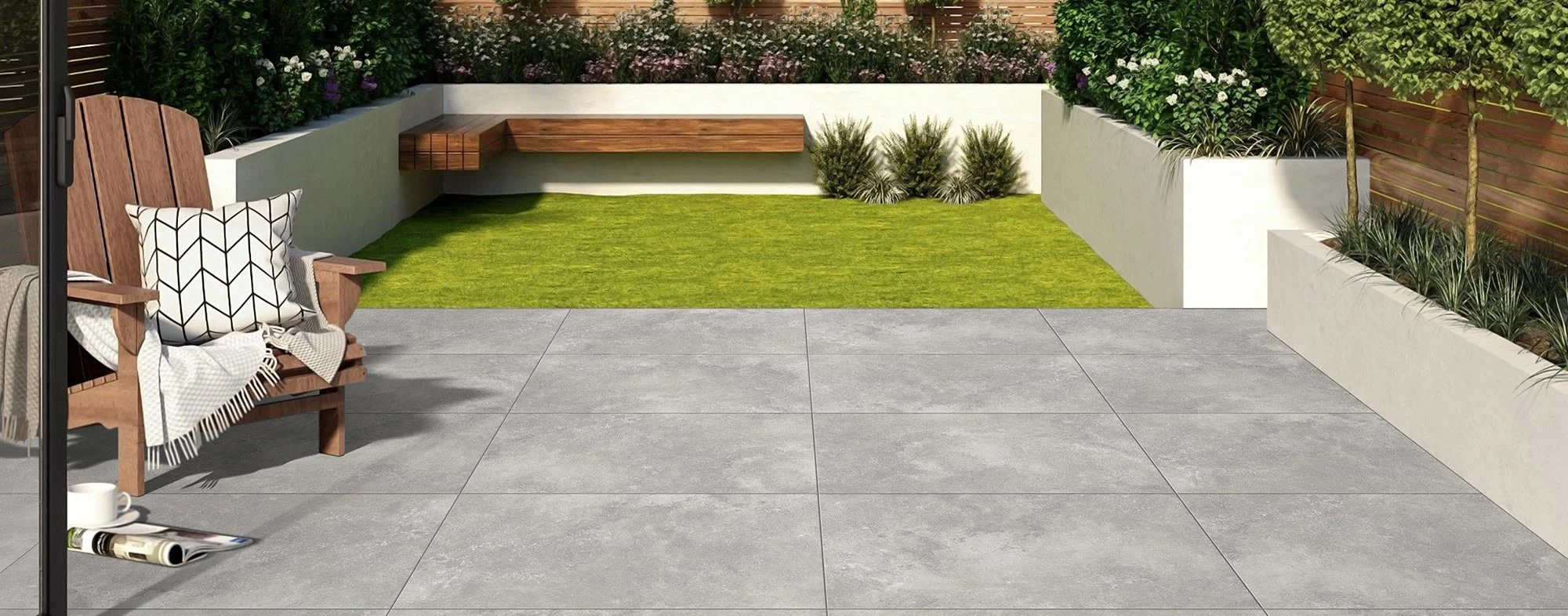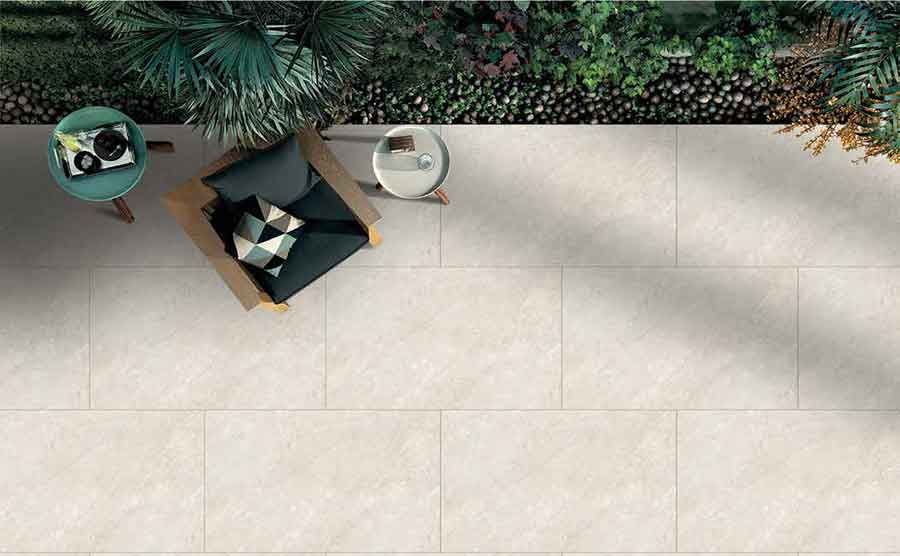Porcelain paving slabs enhance the beauty and functionality of outdoors with attributes, such as durability, versatility, low maintenance, and aesthetics. Whether it is walkways or patios, the exteriors of a property are beautifully adorned using these slabs, ensuring strength and slip resistance.
Porcelain paving is usually considered a sustainable option as it doesn’t require regular maintenance and lasts long. With reduced need for replacement and harsh cleaning chemicals, it protects our environment.
As they come in a wide range of colours, patterns, and textures, endless design possibilities have emerged for contractors, builders, and construction companies to create spaces that transcend time.
The installation process of every stone or tile involves some important steps to follow, let alone grouting porcelain slabs. It isn’t smooth sailing. If you are searching for a comprehensive guide on how to grout porcelain slabs, then your search ends with this blog. Read it & enlighten yourself.
Grouting is a step that not only accentuates the visual appeal and grace of the stones but also ensures their longevity and long-lasting finish. Grouting secures the slabs in place and prevents moisture and debris from seeping between the tiles, maintaining a clean and hygienic surface.
As one of the leading natural stone suppliers in the UK, our experts hold thorough knowledge and deep understanding of how to grout porcelain slabs perfectly. But before we begin to explain the process, we would like to throw light on the tools and Materials you’ll need.
- Grout: You can choose the grout colour keeping the texture and colour of the porcelain paving slabs. The shade you pick should complement the porcelain slabs. Besides aesthetics, buy a grout which ensures durability and long-lasting finish.
- Rubber Float: This is a tool through which you can spread and pack the grout on the surface of the slabs.
- Grout Sponge: This tool will be useful in cleaning the excess grout from the surface.
- Bucket: To mix the grout according to the manufacturer’s instructions.
- Grout Sealer: It protects the grout from stains and moisture.
- Safety Gear: Gloves and safety glasses to protect your hands and eyes while handling the grouting procedure.
- Soft Cloth: For wiping off the haze that appears once the grout sealer is dried.
These are the tools needed to grout the porcelain slabs. Now that you’re equipped with all the necessary tools, begin the process with these steps:
Clean the Porcelain Slabs
First things first, you need to ensure that the porcelain slabs are properly installed. Clean the dust, debris, or any adhesive residue left on the slabs to achieve a smooth finish. You can use a mild detergent and water to gently scrub the surface. Make sure that the surface is dry before you move to the next step.
Mixing the Grout
Grout fills the gaps between tiles or stones, providing stability and preventing movement or shifting of individual pieces. To prepare the grout, use a bucket and a mixing paddle to achieve a consistent mixture which should look smooth without air bubbles. Let the grout mixture sit for a few minutes before applying it.
Applying the Grout
Make use of a rubber float and apply the grout over the surface of the porcelain slabs. Hold the rubber float at a 45-degree angle and put a small amount of pressure while filling up the gaps using a grout mixture. If you fill the grout in larger spaces in one go, it will surely dry up quickly. Therefore, work in small sections so that it doesn’t dry up fast.
Packing the Grout
Once you spread the grout using a rubber float, don’t forget to evenly distribute the grout and pack the gaps properly. For this, you need to hold the float at a steeper angle and move it diagonally across the gaps.
Remove the Excess Grout
Once you’ve packed the grout, let it set for around 20 to 30 minutes. Then, take a grout sponge and gently wipe off the excess grout from the surface. Make sure that you don’t scrub it or put extra pressure as it may affect the grouting or pull it out from the gaps.
Allow the Grout to Cure
Usually the grout gets cured within 24-48 hours, and thus it’s important to keep the porcelain slabs dry. Also, avoid walking on it as it takes time to completely cure.
Use Grout Sealer
A grout sealer is applied once the grout is completely cured. This sealer should be of premium-quality in order to protect the grout from moisture, stains, fading, or discolouration. This is an essential step which not only protects the grout but also ensures a long-lasting finish.
Polish the Surface by Wiping Off the Haze
Wait for the sealer to dry and then you will notice a haze on the surface of the porcelain slabs. You can wipe off the haze using a soft, cotton cloth. This way, the slabs look more refined and polished.
Grouting porcelain slabs requires attention to detail and precision, and thus you must follow manufacturer’s instructions too. These comprehensive steps will help you achieve a professional-looking finish that enhances the beauty and durability of your porcelain slabs.
You may wonder – how long does it take for grout to dry on porcelain slabs. Well, the drying period depends on several factors:
- Type of the grout you are using
- Humidity levels
- Application of the sealer
On an average the grout takes between 24 to 72 hours to dry before applying a sealer. Thus, make sure you pay heed to the manufacturer’s instructions and follow them properly.
If you’re thinking what type of grout is best for porcelain slabs, then here’s the answer to your quandary! There are different types of grouts, which are as follows:
Cement grout:
It is the most economical option which comes in sanded and unsanded varieties. Unsanded grout is used for tile applications with narrower grout joints, from 1/16″ to 1/8″, while sanded grout is needed for wider grout joints from 1/8″ to 5/8″ and some can even go as wide as 1″.
Latex grout:
More flexible and durable than a regular cement grout, this type of grout is modified with latex. This is the reason why it is less prone to cracking and
more resistant to stains and mildew.
Epoxy grout:
It doesn’t contain any cement and has epoxy resins and a filler powder, which makes it highly resistant to stains and chemicals. It is truly an ideal choice for high-traffic areas. As cement grout can shrink and crack, nothing of the sort happens with epoxy grout. Having said that, it is more expensive and harder to work with in comparison with cement grout.
Are you ready to make the residential and commercial spaces look extra luxurious and visually appealing? If yes, then trust Strata Stones, UK’s highly trusted natural stone suppliers, and purchase the most authentic natural stones. Discover our vast collection today and buy in bulk at competitive prices.




